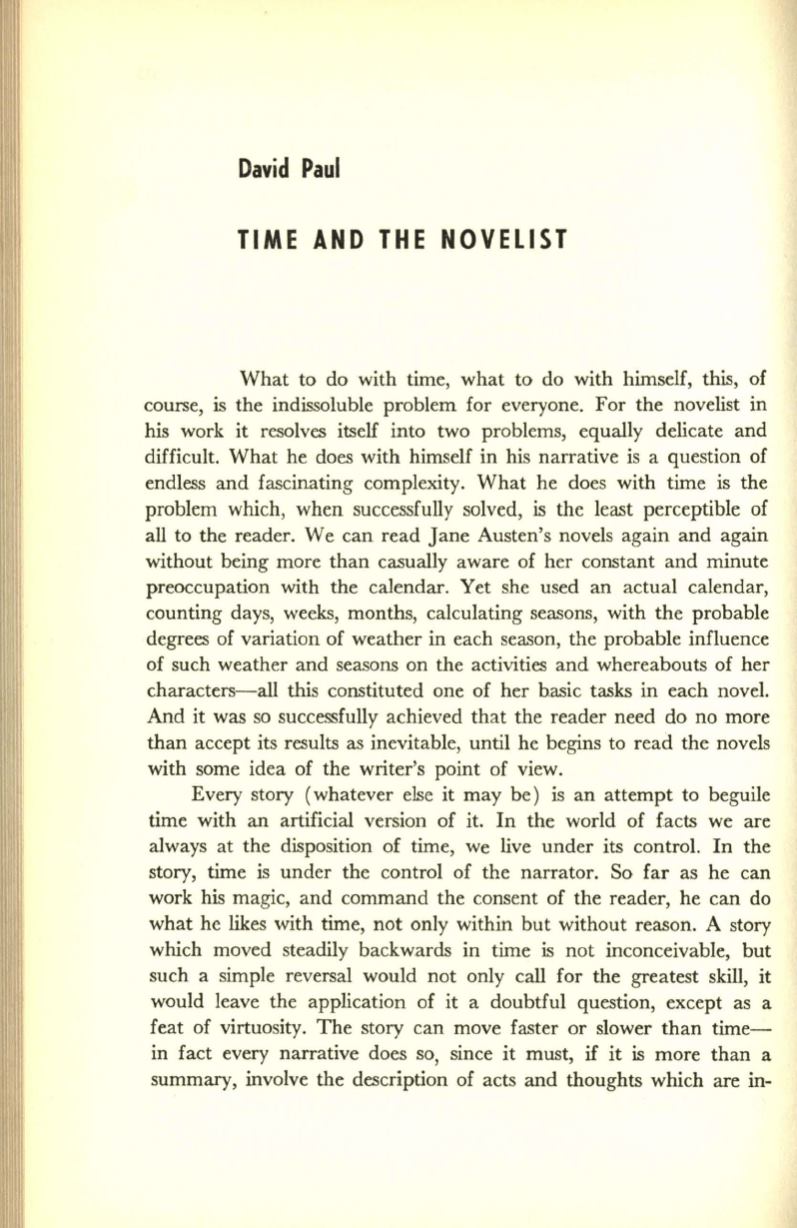
David Paul
TIME AND THE NOVELIST
What to do with time, what to do with himself, this, of
course,
is
the indissoluble problem for everyone. For the novelist in
his work it resolves itself into two problems, equally delicate and
difficult. What he does with himself in his narrative is a question of
endless and fascinating complexity. What he does with time is the
problem which, when successfully solved,
is
the least perceptible of
all to the reader. We can read Jane Austen's novels again and again
without being more than casually aware of her constant and minute
preoccupation with the calendar. Yet she used an actual calendar,
counting days, weeks, months, calculating seasons, with the probable
degrees of variation of weather in each season, the probable influence
of such weather and seasons on the activities and whereabouts of her
characters-all this constituted one of her b.asic tasks in each novel.
And it was so successfully achieved that the reader need do no more
than accept its results as inevitable, until he begins to read the novels
with some idea of the writer's point of view.
Every story (whatever else it may be) is an attempt to beguile
time with an artificial version of it. In the world of facts we are
always at the disposition of time, we live under its control. In the
story, time is under the control of the narrator. So far as he can
work his magic, and command the consent of the reader, he can do
what he likes with time, not only within but without reason. A story
which moved steadily backwards in time is not inconceivable, but
such a simple reversal would not only call for the greatest skill, it
would leave the application of it a doubtful question, except as a
feat of virtuosity. The story can move faster or slower than time–
in fact every narrative does so, since it must,
if
it is more than a
summary, involve the description of acts and thoughts which are in-


